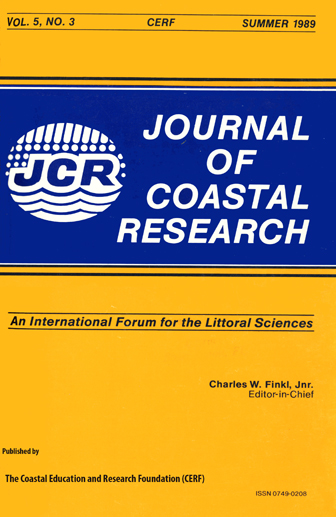Bioclastic Sedimentary Environments of Coral Reefs and Lagoon Around Mayotte Island (Comoro Archipelago, Mozambique Channel, SW Indian Ocean)
Keywords:
Sedimentology, geomorphology, reefal and lagoonal communitiesAbstract
Grain-size distribution, texture (mud content) and quantitative bioclastic component analyses from outer barrier reef and lagoonal environments of Mayotte Island show that reefal and lagoonal sediments are clearly separated. Analysis of major bioclastic components allows the recognition of five sedimentary groups of "facies", each of them being significant of a particular zone. They are (1) coral mollusc on the outer barrier reef slope, (2) coral-calcareous red algae on reef flats, (3) mollusc-coral and/or (4) mollusc-Halimeda at the lagoonal bottoms with coral build-ups or lagoonal plains with free living corals, and (5) mollusc-foraminifera on lagoonal plains: mollusc fragments pervade muddy substrates. In the lagoon the dominance of molluscs reflects the trophic regime related to the island terrigeneous influx. The bioclastic sediment composition generally reflects the nature of the benthic community living in this lagoon. This observation as well as textural and granulometric evidence show that the bulk of the sandy bioclastic material is in situ and has suffered little transport. Some relict grains are present in littoral muddy sands while probably older particles (black/green result of diagenesis) occur in the deeper parts of the lagoon. Textural parameters are more environmentally significant than granulometric ones.


